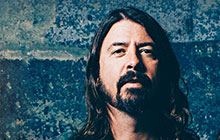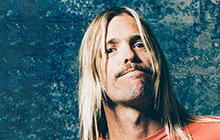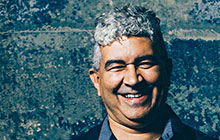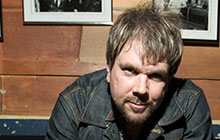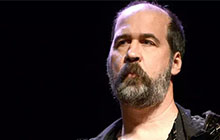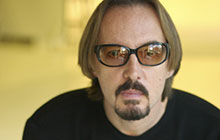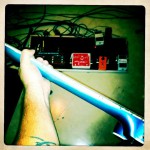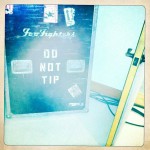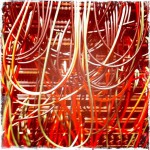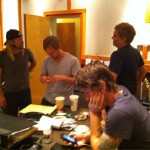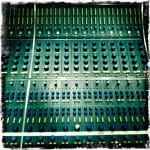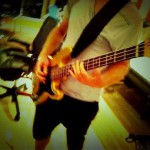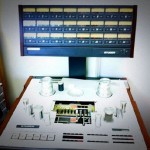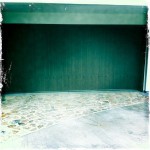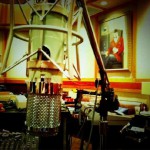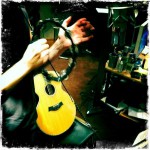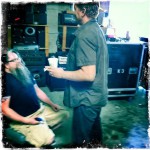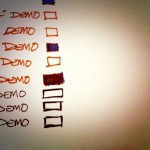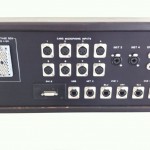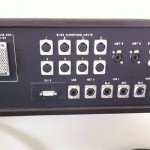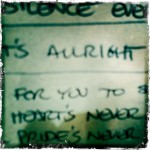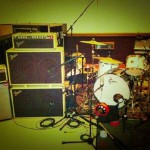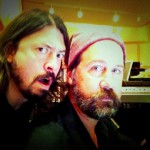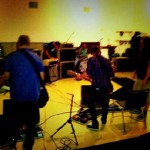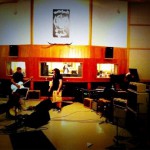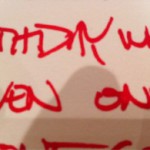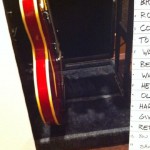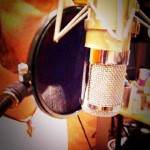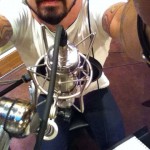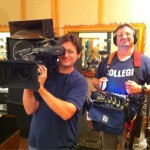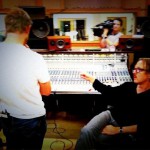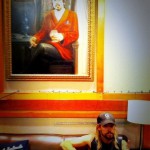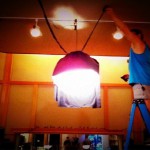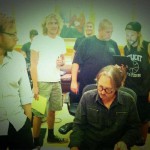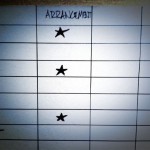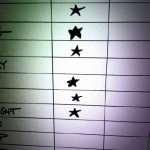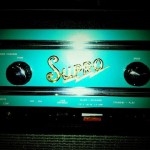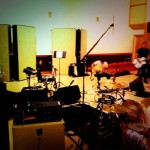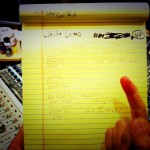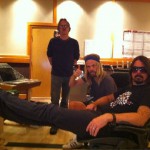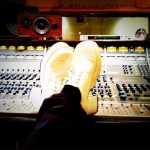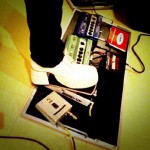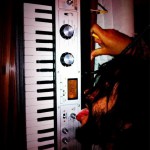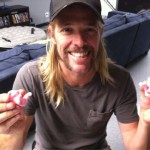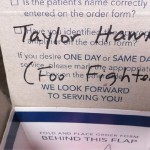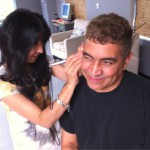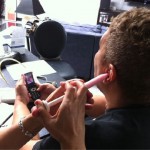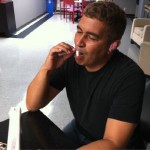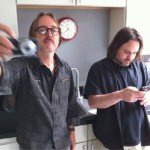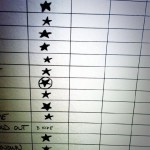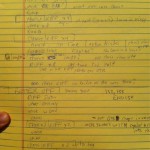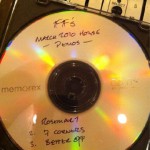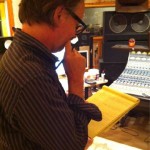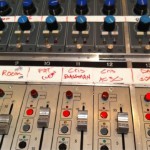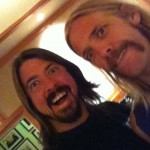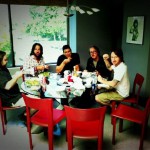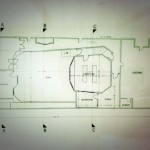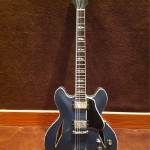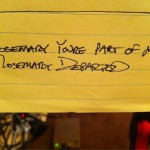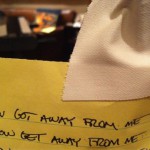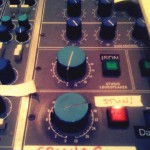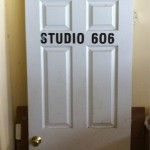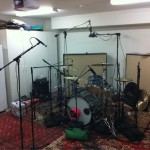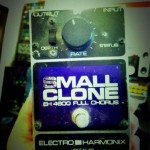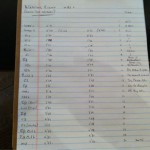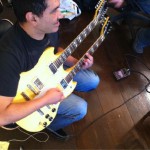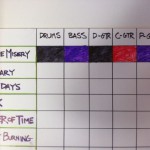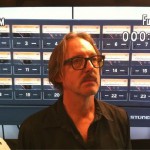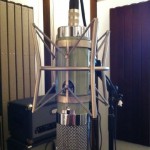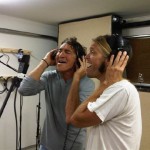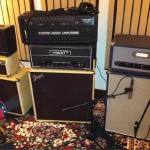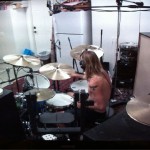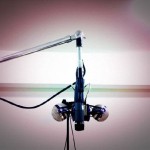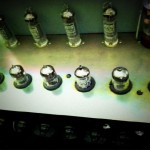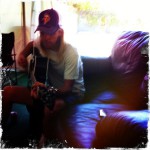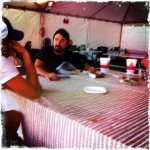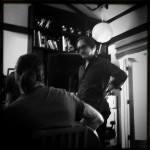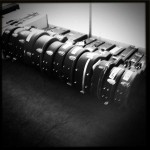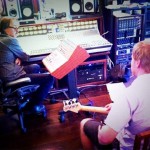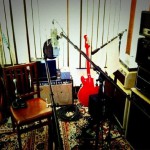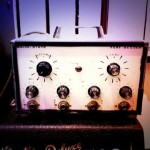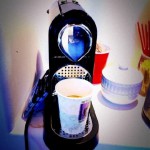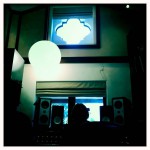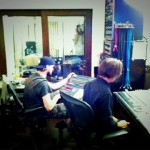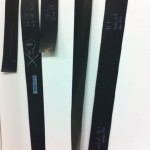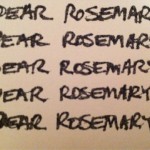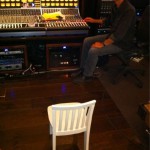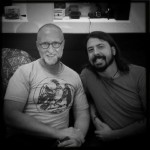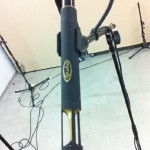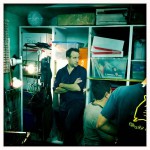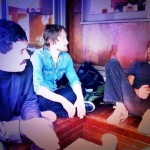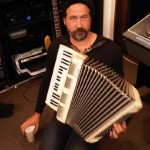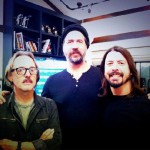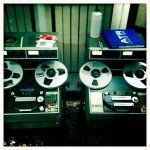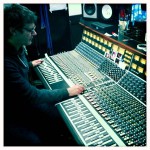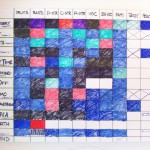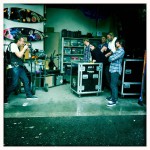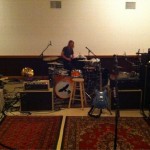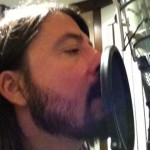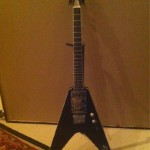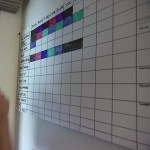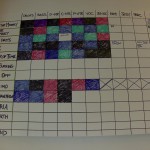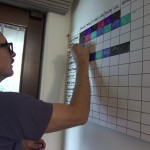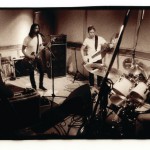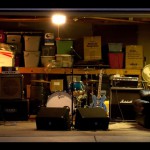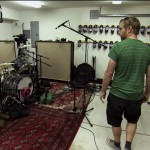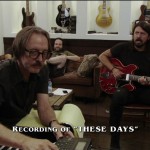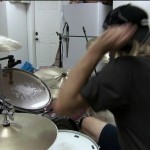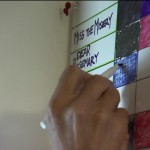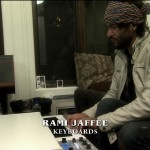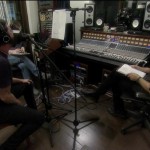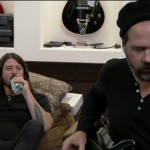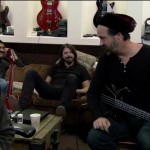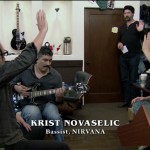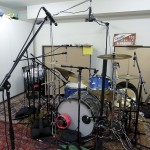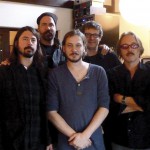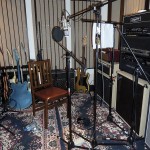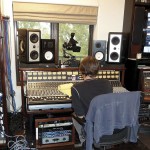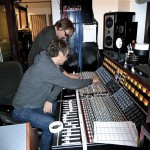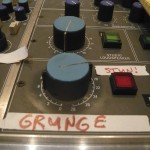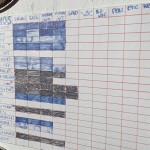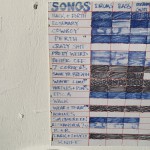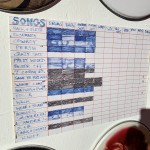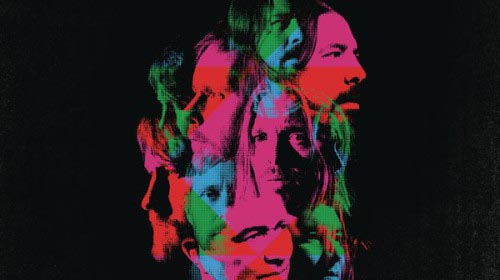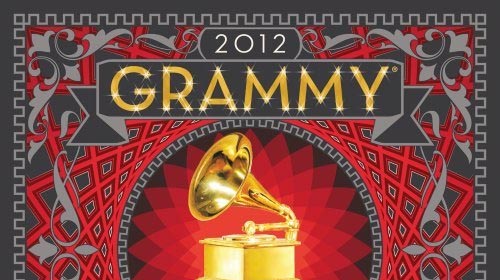Session Information
Except for a brief reprise to promote 2009s Greatest Hits album Foo Fighters were very quiet once touring for their album ‘Echoes, Silence, Patience & Grace’ was completed in late 2008. Dave Grohl told the media he thought it was time for a long break for the band as they had been working virtually non-stop since their inception in 1995.
That didn’t mean a long vacation on a beach for the band members, though. The band leader instead formed supergroup Them Crooked Vultures, recording an album and touring across the world back behind the drum kit. The rest of the band similarly kept themselves busy – Chris Shiflett and Taylor Hawkins both recorded albums with their other bands, the Dead Peasants and the Coattail Riders respectively, whilst Nate Mendel joined his former band Sunny Day Real Estate for a reunion tour and also worked on material for his own future solo album.
In January 2010 Them Crooked Vultures were booked on a tour of Australia and New Zealand and before a show in Perth Grohl, sat in his hotel room, hatched an ambitious plan for the next Foo Fighters album. “OK, we should make a documentary about the recording of this new album and make it a history of the band too. Rather than just record the album in the most expensive studio with the most state-of-the-art equipment, what if Butch and I were to get back together after 20 years and dust off the tape machines and put them in my garage?” Grohl thought to himself.
The Vultures returned home in early February and Grohl immediately began to put his master plan into action. “I literally backed the minivan out of the garage, pulled the lawnmower out, put a drum set in it and set up mics. We soundproofed the garage door so that my neighbors wouldn't call the fucking cops.”
As with most previous albums demo recording began with just Grohl and Hawkins hashing out ideas. “I had maybe 20 or 30 rough ideas. And albums usually begin with Taylor and I, we'll go in and work on tempos and dynamic and rough arrangements of riffs, and then after we've narrowed it down to 20 song ideas, we ask the other guys.”
Following his work producing two songs for Foo Fighters Greatest Hits record in 2009 Butch Vig had agreed to produce the next full-length record but was not entirely prepared for what Dave Grohl had in mind. “The first day we sat down and talked about it,” said Vig. “He dropped one bombshell: ‘I wanna do it in my garage.’” Following that first bombshell Grohl then revealed the next left field decision - recording on tape, entirely in analog. “What we’ll do is we’ll probably record on tape and then dump it into Pro Tools,” thought Vig upon hearing the plan. That was indeed how the past couple of Foo Fighters records had been done, and it was relatively common in the industry. “No no no no, dude. No fucking computers. Not one computer. None” was the response from Grohl. This album was to be 100% analog, just as every band had done in the not too distant past. Whilst he had now adapted to the digital world Butch Vig was still very familiar with recording to tape, the “old fashioned” way.
He was happy to work that way again, but it came with words of caution for the band members - “That means you guys have to be razor-sharp tight. You’ve gotta be so well rehearsed, ’cause I can’t fix anything. I can’t paste drum fills and choruses around. This is gonna be a record about performance, about how you guys play” he told the band.
With exploratory recordings in March 2010 deemed a success work continued in the following weeks to fully prepare Grohl’s house for recording. A single Studer A827 24-Track 2” tape recorder had been used during those test recordings and a second was brought in to enable the band to run up to 48 tracks. To keep track of which was which and avoid any confusion during recording they were given the nicknames Hal and Betty. A new recording console was also ordered, an API 1608 with 32 input channels. With no hope of fitting the huge desk in the garage itself it was instead installed in a spare room in the house, above the garage. “The API sound is great for rock,” said producer Vig of the choice. “It's not subtle and it's not soft. When you turn the gain up on an EQ, you can really hear it. It's musical.”
Engineer James Brown was similarly complimentary of the selected hardware. “I've always loved the API sound. I grew up as an engineer on a pair of API consoles back at RAK Studios in England. The sound is very open and musical. Heading into the project, I was glad to have the API sound as a known quantity. Also, I knew it would withstand the heavy workload day in and day out.” Once the console arrived Brown kitted out the expansion slots with various API EQs – the 550A three-band, 550B four-band, and 560 Graphic EQs.
Equipment continued to arrive at the makeshift studio each day, all adhering to the analog only rules. A pair of Barefoot MM27s monitor speakers was installed as well as extensive outboard gear – two Chandler Little Devils, two Dramastic Audio Obsidians and five Universal Audio LA3As were used for compression whilst two Manley ‘Massive Passive’ and two GML 8200 boards were used in the EQ chain. For preamplifiers, a mixture of API and Neve racks were borrowed from Studio 606 across town.
For vocal recording a small isolation booth was created in a room just off the study with sliding doors to close it off from the main room. When it came to the garage space itself relatively little work was carried out other than the required soundproofing. Large four feet square baffles were placed behind Hawkins' drum kit, a further two placed near the door to stop sound leaking out and a large carpet was laid underneath the kit. “Initially, it was so loud and bright with no carpet in it, and the cymbal bleed was killing everything,” said Vig of the reason for adding the latter. “To tame that space, we would’ve had to hang things everywhere” engineer Brown added, noting that lots of baffles and other noise isolation devices would’ve been required to get clean, pure results. “And y’know, the brief going into it was that Dave didn’t want to do that. He wanted the record to have a trashy, aggressive quality to it.”
The number of microphones in the garage was tremendous. Covering Hawkins drum kit was a Yamaha SKRM100 Sub-kick, an AGK D112 on the kick itself, A Shure SM57 on the top and bottom of the snare, an AKG 452 on the Hi-Hat, a Josephson ES22S on the toms and finally an AKG 452 on the ride cymbal.
Because of the unique challenge that came with recording in a room with no acoustic treatments and a concrete floor Brown spent a long time experimenting with the placement of overhead and ambient microphones in the small space. Eventually, he settled on a Neumann M49 for drum kit ambiance, a Violet Black Finger for overhead ambiance, a pair of Soundelux 251s at knee level against the garage door for main ambiance and a pair of Crown PZMs for floor ambiance. Finally, a Violet Designs Stereo Flamingo and a Shure SM58 were used for overhead mics, the latter placed behind the drum kit at head height.
“I’d use the same mic placement in that garage, regardless of the mic,” explained Brown. “Turning the Soundeluxes away from the drums and pointing them into a corner tempered the top end. The mic choices were more about choosing cymbals and asking Taylor not to hit so hard. That allows more room for the snare and kick to cut through in the ambient mics. That’s when you can really hear the garage; the air isn’t getting sucked up by cymbals and mid-range.”
In terms of microphones on the amplifiers, most of the work was done by Shure SM7 and SM57 models although Royer R121s and two RCA BK5 ribbon mics were also used. “I had the RCA mics sent out from Smart Studios,” explained Vig. “They’re my favorite ribbon mic because they have higher end than normal ribbon mics, but they can also take a really intense sound pressure.” Despite Grohl stating one goal of the album was to record away from a state-of-the-art studio, without the latest cutting-edge technology, all of the analog equipment purchased for recording did not come cheaply – the final cost came in at well over $150,000.
July 4th, 2010 saw Them Crooked Vultures play the penultimate show of their tour, with just one further show remaining at the end of the month in Japan. The band used this opportunity to head into Studio 606 for a week and work on some further Foo Fighters demos before final recording for the album would get underway later in the year. Seventeen songs were worked on at this time including ‘Bridge Burning’, ‘Rosemary’, ‘Better Off’, ‘White Limo’ and the long-standing ‘Fuck Around’. The week was deemed a productive one by Dave Grohl as he headed off to play with the Vultures one last time.
With that side project at a close, the seventh Foo Fighters album now had Dave Grohl’s full attention. August 16th saw official pre-production sessions begin at Studio 606 and for the following three weeks the band worked with producer Vig to reduce the thirty or so song ideas they had down to a reasonable number for an album.
Speaking of their choice to spend more time at 606 rather than just heading straight to his house, Grohl explained how beneficial he felt the extra time would be - “I thought the more prepared we are when we get to the house the less we have to worry about the songs and the more we can focus on the sound. Having never made a record in the garage, nobody knew what was going to happen.” The band rehearsed at their base every day for up to eight hours, although he was conscious that they didn’t over-work the songs too much - “Just to the point where there was still some mystery to them”.
When the band was initially demoing songs earlier in the year they were playing around with ideas that Grohl considered “heavy shit” and in February he told Rolling Stone that the next Foo Fighters record was going to be “our heaviest record yet”.
Despite many of those heavier songs not even making it to the final pre-production sessions Butch Vig had read the quote and told Grohl “Well, now it has to be 'cos you've already told everybody!” As summer started drawing to a close the band would play through each track with Vig deciding which were up to the billing. “This doesn't rock enough, no. Next,” he would bluntly tell the group after hearing some of the ideas. The band continued to work through their material, re-arranging some songs until they had what they believed were the thirteen songs worthy of the ‘heaviest record yet’ label.
Pre-production work wound up on September 5th, 2010 and the very next day, Labor Day in the United States, operations moved straight to Dave Grohl’s garage and recording of Foo Fighters seventh album was officially underway. When recording all their previous albums the band had always worked in the same manner – recording drums for the entire record first, then all the guitars, and so on. This time, a different approach was planned.
The aim was for one complete song to be recorded each week – start with the drums on Monday, the other instruments would then follow with a rough mix of the entire track competed by Friday. “We stuck to that and it was good because each song kinda had its own life.” said producer Vig of the schedule. “Once we were focused on a song for a week, that’s pretty much all we did. In a way, you had a sense of completion”.
The first track the band worked on was ‘Miss The Misery’. Hawkins began to lay down his drum track but immediately some teething issues arose - “when it came to recording the first drum track, it quickly became apparent that the cymbal bleed was still presenting a major problem” explained engineer James Brown.
“The cymbals are always a problem with the Foos because they wash a lot and they hit them so hard”. In an attempt to solve the bleed issue the main crash cymbal was switched out for a Zildjian which had holes drilled in it to lower the pitch and shorten the sustain, the length of time it would ring out after being hit. The ambiance microphones in the garage were also turned away from the kit, instead facing outward towards the bottom corners of the garage.
Acoustics and bleed were not the only technical issues the band faced. With the first drum take on tape Vig started razor splicing edits only for the delicate magnetic tape to start shedding the oxide coating, a phenomenon known in recording circles as “sticky-shed syndrome”. Concerned that audio would be lost to the process Vig suggested they also back up everything digitally but Grohl was having none of it. “If I see one fucking computer hooked up to a piece of gear, you’re fucking fired! We’re making the record the way we want to make it, and if you can’t do it, then fuck you!” he playfully shouted at the suggestion. “What if something happens to the tape?” Vig asked. “What did we do in 1991, Butch? You play it again! God forbid you have to play your song one more time.”
Sound problems averted and the 'no digital' ethos made crystal clear recording continued to plan with guitar tracks laid down for the first song. As well as Dave Grohl and Chris Shiflett a third guitarist was also at the house – Pat Smear. An original member of the band, Smear left in 1997 citing a lack of desire for constant touring, preferring to “Just do nothing”. He’d first been invited back into the Foo Fighters family in 2006 as an extra guitarist on their acoustic tour and was then asked to record a small number of guitar tracks on their 2007 album ‘Echoes, Silence, Patience & Grace’. Following recording Smear then joined the band on-stage throughout touring the for the album, performing on all the new songs but then leaving the stage for the old classics. This time, Grohl wanted him involved throughout the entire album and considered him the fifth full-time member of the band going forward.
With three distinct guitar parts recorded for ‘Miss The Misery’ next in the process was Nate Mendel laying down his bass track. For most songs, Mendel recorded with his Lakland Bob Glaub Signature bass guitar through an Ashdown ABM 900 EVO II Twin Bass Amplifier head. “I think we might have used a Fender on one song, I think we tried a Gibson Ripper on one song,” noted Vig of some other selections. “But he’s very fluid, he has a really good feel and that was almost more important sometimes than the sound — how the performance felt on the song”.
It was then time to record the first vocals for the album. For much of the session Grohl would sing into a Bock Audio 251 Tube Condenser Mic which went through a Neve 1073 Microphone Preamp & Equalizer into an Empirical Labs Distressor Compressor. The majority of the vocals would be recorded in the small vocal booth to the side of the control room but on some tracks Grohl elected to perform out in the open control room, creating a more echoey sound. Speaking of the unique issues that the team was presented with recording in analog producer Vig noted “We were doing everything on the slave reel so by the time we got all the guitars on there, there were usually only four tracks left for vocals and two left for vocal bounces. So, Dave would just do these performances and we would work until we felt that we had four good takes that could almost be considered a lead. With Dave, once he got focused, the takes were very consistent. When we’d finish, I’d put all four takes up and listen to them all at the same time, and you could hear how tight it was. If he was off, phrasing-wise, especially on a chorus, then we’d go back in and do it. But really, though, it was so tight” explained Vig.
“Then I would usually comp it in chunks — use take two for the first verse, take three for the chorus — and then we would record a double. The cool thing about live doubling is there’s no Auto-Tune and it’s not perfect and because it’s looser, it sounds better. It’s sort of wider and thicker sounding. Every now and then when we were bouncing, we’d have to punch in a word. Or sometimes I’d have to do, like, ninja fades, slight crossfades. It was a lot of work, but again I think when you hear it, it has character. It feels like a performance. It doesn’t feel like something that was put together in a studio.”
Grohl sang the lead on the song before Taylor Hawkins recorded backing vocals together with the first guest of the album — lead singer of punk rock outfit The Tubes, Fee Waybill. Dave Grohl first met Waybill several years earlier in a vintage cloth store whilst he and his wife were looking for costumes to wear to a party. Waybill went over to introduce himself to the couple and quickly hit it off, Dave and Fee both a fan of each other's work.
They soon became good friends attending parties and going to dinner together and so when the time came to record the album Grohl asked Waybill if he wanted to help. “He sent me a text and said 'We’re doing this tune and the background vocal sounds like you, come over'“ recalled Waybill. Speaking of the all analog, natural approach Waybill noted: “it was all real, no Pro-Tools, no flying in parts from here or there, we sang that chorus every time it came up”.
Week two and work began on the next song, 'Dear Rosemary', previously titled simply ‘Rosemary’. The process once again began with Hawkins recording drums, a routine already starting to form. Grohl would stand in the garage with his drummer, playing guitar and directing Hawkins. “Dave would just stand two feet away from him, just so they could communicate, especially if we were trying to figure out drum fills or some patterns that were not quite working. A lot of times with Taylor instead of tape editing, we would just punch in,” explained Vig. Punching in/out is the practice of recording a new take directly over the previously recorded tape, replacing that section.
A simple concept, but it meant whoever carried out the delicate work on the tape had to be very precise or risk losing something. “You can hear the punch ins and punch outs if you put headphones on. Especially if you soloed the drums, you would hear the cymbals change or the snare tuning change a little bit,” the producer continued, adding that it indeed didn't always go swimmingly – “Sometimes we would fuck up — like James would punch in on a chorus and he’d clip a snare or something and we’d play it back for Taylor and go, ‘Sorry, dude, you’re gonna have to do it again'.”
According to Butch Vig the three guitarists all brought something unique to each song - “They all kinda have different roles. Dave is kind of the glue, he plays most of the rhythm stuff and locks in really well with Taylor” he explained. “Chris is an amazing musician and normally he would play the riffy parts, the arpeggio parts, the lead breaks, things like that”. The returning Pat Smear was described as “The X-Factor”, coming up with “gnarly guitar tones” and adding smaller, unique parts to many songs. “For Pat’s main rig we ended up using a Roland Jazz Chorus with these crazy pedals that would make the fillings in your teeth fall out” the producer revealed.
Smear also recorded several songs using a deeper Baritone guitar, finding a place in the songs lower than what Shiflett or Grohl had recorded. In terms of amplification the returning Smear used a low-end Peavey on some songs, with Vig believing it was the perfect antithesis – “Chris and Dave have all these great vintage amps and then Pat has like the crudest sound. It was perfect.”
'Dear Rosemary' also saw the second special guest of the session, Hüsker Dü guitarist and vocalist Bob Mould joining the group. “I was a huge Hüsker Dü fan, and obviously Bob Mould's music has influenced the way I write music and the way I play guitar. A lot of what I do comes from [him]” said Grohl of Mould. “I met him for the first time last summer and said, You know I'd be nowhere and nobody without your music, right? And he very politely nodded and said: 'I know'. We swapped phone numbers and became friends. I had this song that I imagined would be a duet between us, and he obliged” Grohl said, explaining how the collaboration came about. When Mould arrived at the studio Grohl had purposely not written lyrics for the bridge of the song, preferring to do so whilst his special guest was there with him. The pair worked through the song, harmonizing together through much of it.
Recording continued in the same weekly routine with tracks 'These Days', 'Walk', 'A Matter Of Time' and 'Bridge Burning' all recorded, albeit not in the same order as originally written on their whiteboard. The next song due to be worked on was ‘Better Off’ and whilst all instrumentation was recorded as scheduled, the vocals were not completed. Grohl had intended for Shudder To Think frontman Craig Wedren to record backing vocals on the track but with Wedren unavailable the band moved on, hoping to complete it later in the session.
Next up was ‘White Limo’, a song the band had been working on for approximately eight years, occasionally playing an instrumental version of the song during soundchecks towards the end of touring for the fourth album, ‘One By One’. For most of its life it was known by the working title of ‘Flagger’, owing to the fact the band believed it to be in a similar style to legendary punk rock outfit Black Flag.
Foo Fighters attempted to record the song for both ‘In Your Honor’ and ‘Echoes, Silence, Patience & Grace’ but for a multitude of reasons, it wasn’t included on either album. “We've been trying to make that into a song for years,” said Shiflett. “It has such a badass riff it's fucking insane. It makes you want to break into someone's car and steal their stereo,” was Grohl’s description of the track.
The instrumentation and structure of the song for this recording was largely the same as the version from pre-production in 2004, heard on the ‘making of’ DVD for the album ‘In Your Honor’. This fresh version did though show clear signs of evolution with a much fuller sound, adding many layers of guitar. For the vocal performance, Grohl wanted to achieve a gritty, distorted sound similar to that of the song ‘Weenie Beenie’ from the 1995 debut album.
In an attempt to replicate that sound Grohl sang into a Shure SM57 microphone but rather than the usual clean signal path it was passed through a Pro Co Rat guitar distortion pedal. As far as the words Grohl sang, even he wasn’t really sure - “I don't even know the lyrics to that song. I wrote them in two minutes,” he quipped, comparing the hurried writing to the situation he found himself in when recording what would become the debut album. “Some of the lyrics weren't even real words” on that first effort according to Grohl and ever since then, he’d usually spent a lot more time on his lyrics.
For ‘White Limo’, he was reminded that it wasn’t always necessary. “Dave, I don't want you to feel like you always have to write We Are The fucking World every time you write a song.” wrote bassist Nate Mendel in an e-mail, referencing the charity song released in 1985 by U.S.A. For Africa, a huge collection of popular acts of the era. “That made me a lot more comfortable writing, a lot more laid back,” said Grohl. With the song now finally deemed ready for release it was given a final title, ‘White Limo’. According to Grohl, this was a code between the band members for “getting really fucked up”, a description he felt suited the raucous song which he re-iterated was about “nothing at all”. The band was well over halfway through recording by October 2010 and work began on the next track 'I Should Have Known'. Unlike many of the songs which had been first demoed several years earlier, this track was brand new - “That song happened halfway through pre-production,” revealed Grohl. “We didn’t enter into the recording with that song. I just did that in my bedroom. I sang it and played the riff, and everyone wanted to work on it.”
Despite the strong positivity surrounding the song it almost didn’t make it into the final cut of thirteen songs, the second take in pre-production sounding “like shit” according to Grohl, with “none of the passion or the energy or the combustion of the first take”. Despite this the song did make the cut and was worked on over the usual week-long schedule. For the track Grohl's vocals were recorded through a Roland RE-201 delay effects unit creating a “spooky, distorted sound” according to Vig. Rather than head into the vocal isolation booth, he sang out in the main room sat next to the producer and he was astonished by the passion Grohl put into the performance - “At the end of that take, the hair on my neck stood up; I couldn’t say anything. Dave looked like he was crying, ’cause he was singing so hard. He was obviously channeling something inside.”
Butch believed the song was written about Kurt Cobain but Grohl in-part denied that. “At first I started writing it about someone specific, not Kurt,” he told an interviewer. That specific someone he referred to was Jimmy Swanson, one of his best friends since childhood who passed away suddenly in 2008. “But then as I elaborated on it... I mean, I look at it and I think there are definite connections. And I definitely felt that way before, especially in Nirvana, with Kurt where, you know, I was afraid this was going to happen.” Grohl added. Whilst most of the lyrics saw Grohl expressing feelings that he should’ve been more aware of the struggles Jimmy was facing before his death the reference to Kurt and others in the lyrics came explicitly with the line “I’ve been here before”.
The track also saw yet another guest appearance, friend and former Nirvana bassist Krist Novoselic. “We've always been in touch. One of the things about the expanded Nirvana family, it doesn't matter how much time has passed, when you see each other you're immediately connected by that, by the good and bad things” said Grohl of his longtime friend. “It was perfectly natural for me to say,' Y'know, this would be such a cool opportunity to get Krist down into the studio.' He and Butch and I haven't hung out in the studio for 20 years. And I wasn't even thinking about the music, I was just thinking about the three of us coming together, and maybe without words just acknowledging that we survived, y'know?”.
Novoselic recorded bass and accordion tracks for the song and it wasn’t long before Grohl and Vig felt they were briefly back in the past - “When Krist plugged his Gibson Ripper into the Hi-Watt amp he played the bass line he came up with in his head and, I’m not kidding, it was so undeniably Krist Novoselic that Butch and I just looked at each other and laughed” said Grohl of the surreal experience. Recording continued into November with the tracks 'Arlandria' and 'Back & Forth' although for the latter only drums and bass were initially recorded, the band instead moving straight onto the penultimate song on the recording list, ‘Rope’.
The track had begun life in a way many Foo Fighters songs had in the recent past, with Taylor and Dave jamming together and bouncing ideas off of each other. “Taylor sometimes comes up with a rhythm on drums, and then bases a riff around that - that's how it happened with this song. I think he had that rhythm in his head and then figured out the chords and the structure” explained bassist Mendel on the origins of the track. “When we first heard it, it was just Dave playing it on the guitar; then we started jamming around with it. Taylor and Dave usually work on the drum parts together. Taylor comes up with ideas, and then Dave will say, “I want to hear it like this,” or, “That's cool what you're doing there – try it this way,” and we just build it up from there. Since Dave's a drummer, he has the advantage of rhythm being second nature to him. It allows him to do things that are a bit more complicated without having to think about it too much”.
According to guitarist Shiflett, the song had evolved greatly since its early inception. “It is so different now than what it was when we were jamming it on tour”. Grohl also noted that that the chorus was slightly different back then whilst Pat Smear wasn't sure on the merits of the earlier version of the song at all – “Somehow it didn't make sense to me when we played it at sound checks. I couldn't get a handle on it until we got into the studio.”
The track featured irregular guitar work, something Shiflett had trouble getting his head around. “What my guitar is doing over the bass makes no sense in a way” he suggested. “It does, but you don't know how. A flat seventh, a fourth and a minor third; those seem like weird notes to put together in a chord and put in those places. I remember when we were learning that I was like, ‘What the fuck? This is nuts.’ They're all minor sevenths with a sus four. But it's in B minor, and then you move to a D, which is also a minor sus four. So that's kind of illogical, in a way, to your ear.”
The drum track of the song featured what producer Vig described as one of his highlights - “there is an amazing, really ballsy moment on Rope where it just stops and it's dead space, and then they come back in and Taylor plays these crazy fills before it launches into the guitar solo. I think a lot of producers would probably have cut that out, but we wanted to leave it in because we felt we had captured something special. It had a great vibe, and it was fun, cool and completely unexpected”. One further song remained on the song board hanging in the studio, ‘To No End’, but the band elected not to work on it at all, sticking with the twelve songs that had already been started.
With the exception of 'Echoes, Silence, Patience & Grace' every Foo Fighters album since 1997s 'The Colour And The Shape' had been in some way or another re-recorded. That wasn't the case with this album, but the band did go back to one song they weren't happy with, 'I Should Have Known'. “We tracked it and I thought it sounded good, but Dave thought it sounded too ‘parted out’ like I’d worked out the arrangement too much.” said producer Vig.
Grohl thought the track was being turned into a radio single by Vig but that wasn't to Grohl's liking, instead desiring a “raw and primal” sound. “It sounded like some bad Coldplay B side. Fuck this! Why can’t it be chaotic and out of control and why can’t we let it explode? Don’t try to rein it in. Let it go free” thought Grohl.
The band went back and listened to recordings of the track from pre-production and despite it sounding like “a complete train wreck” according to Vig he did prefer the general feel of the earlier, less polished version. “Taylor was playing all these wild fills and Pat Smear was playing noise and feedback, but I remember listening to it going, 'The vibe on that is really exciting'“.
And so, in the final week of recording the band went back and re-tracked the song from scratch. Grohl told Hawkins to “Go bananas” and he duly obliged, adding fills that Vig described as “almost Keith Moon-esque”. For Grohl's vocals, a lighter version of the setup used to record vocals for 'White Limo' was set up, a handheld microphone running into a guitar amplifier with tape echo applied. “It definitely has that John Lennon solo album vibe, dirty and mucky, but really primal sounding,” said Vig of the resulting vocal capture. “The end of that song is all from the first take he did. He was sitting about four feet away from me and when he finished it nobody said anything for a few seconds and I could see tears welling up in his eyes and he had sung so hard he couldn't even catch his breath,” he added, commenting on the emotion and power Grohl put into the vocal take. Krist Novoselic also returned to the studio, adding some further bass overdubs to the track.
With 'I Should Have Known' re-recorded and the band now happy with it recording was deemed complete, attention then shifting to mixing in mid-December. The group chose Alan Moulder for the job, a renowned British music producer who Dave Grohl had recently worked with mixing the Them Crooked Vultures record. Initially the master tapes were taken to Chalice Recording Studios in Los Angeles for Moulder to mix on their huge 72 Channel Solid State Logic SL9000 mixing desk, the same place and board he'd worked on the Vultures record, but neither Moulder nor Grohl were particularly happy with what they were hearing.
When comparing what he was able to do in comparison to James Browns original rough mixes, Moulder didn’t feel he could make any improvements. “James hadn’t done anything in particular – it just came off the API sounding like that. There was a certain top-end presence that when you threw it up on the SSL just wasn’t there. Immediately it sounded a bit cloudier.” Grohl was also keen for it to sound more like the rough mixes - “Make it sound like my garage” he told Moulder.
Grohl had initially wanted to mix the album back at the garage anyway and Moulder soon realized that was the only way it was going to sound the desired way - “You want to make it sound like your garage? Mix it in your garage!” he playfully told Grohl. “There seemed to be a theme and a story to the record and us being at Chalice didn’t seem to be part of it. The whole record was done punk rock style in the garage, and it seemed a little odd to go from that to this other studio in Hollywood”. Vig was surprised at how accepting Moulder was of the idea, noting “There’s a lot of mixers I know who would not want to do that, who would not want to go to manually mix in this room where there’s no acoustic treatment. But he did”.
Moulder, Vig, James Brown and Grohl were all forced to squeeze together at the console in the study come control room back at the house, all their upper limbs required to complete the process. “We mixed manually on the API board, with me, James, Alan and Dave, all eight hands on board, all doing the faders, no automation; we couldn’t even do mutes” Vig explained.
“I would do the vocal rides, Alan would man everything and effects, James would do the guitar, Dave would run the drums, but the drums were only four tracks and it was second generation. We didn’t go back, we didn’t have the inputs on the API to go back and lock up the A reel. So, all the drums are second-generation mixed to the B reel” he said, further detailing the process.
To this point the record had, as Grohl wished, been created using only analog gear and techniques. This was however broken slightly in the mixing phase, Moulder using an Eventide 2016 Reverb Unit on some tracks as well as two Lexicon PCM 42 Signal Processors for delays and an Eventide Eclipse digital effects processor on the vocal tracks.
Despite mixing being well underway Grohl did have one vocal left to record at this stage, for the song ‘Better Off’ which was quickly taken care of.
On December 21st, 2010 the band played a secret live show at Paladino's, a small bar in the Tarzana neighborhood of Los Angeles. During the show, four tracks from the recording session were given their live debut - 'Back & Forth', 'White Limo', 'Dear Rosemary' and 'These Days'. Before playing the first of the four tracks Grohl told the crowd that they had just finished the record that day, clarifying in a later interview just how close it was - “Honestly, we finished the last mix and an hour later we got in Alan's car and drove down to the club and I walked right up onstage”. With recording and mixing completed the last step of the process was mastering. After a short break for the holidays on January 3rd, 2012, Grohl took to Twitter to reveal that the task had been placed in the hands of Emily Lazar, a Grammy-nominated mastering engineer. Lazar worked on the record at The Lodge, a mastering facility she herself founded based in the Greenwich Village neighborhood of New York City.
Of the twelve songs fully completed during this session only the first take of ‘I Should Have Known’ has not been released. Eleven were released on all versions of the album 'Wasting Light' and the twelfth, 'Better Off', was included on a Best Buy exclusive special edition. Strangely for an album that had placed such a huge focus on analog recording two tracks were also made available as official dance remixes - Deadmau5 remixed 'Rope' and The Prodigy re-imagined 'White Limo'.
